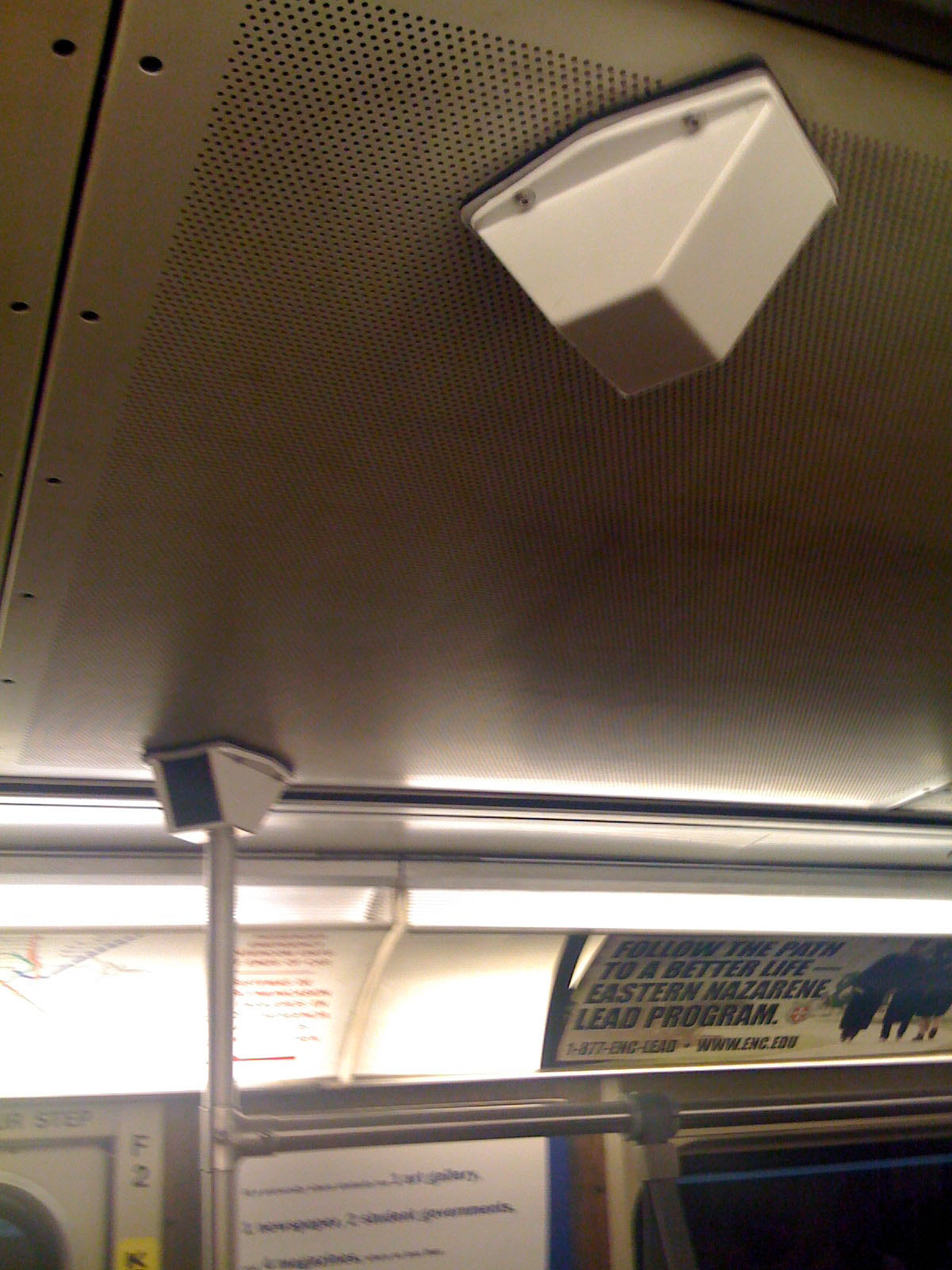New Red and Orange Line Trains Will Likely Feature Real-Time Surveillance Cameras

Orange Line Surveillance photo uploaded by Ben Becker on Flickr
When Governor Deval Patrick announced last year that the state was searching for a company to construct brand new Orange and Red Line train cars, there was a collective sigh of relief from passengers who are constantly plagued by severe delays during their rush-hour commutes.
But swapping out the aging vehicles for updated versions won’t just enhance the overall rider experience. It will also mean more state-of-the-art security cameras hanging from the ceilings of the train cars, capturing passenger activity in real time.
According to Kenneth Sprague, the MBTA’s Transit Police Deputy Chief of Investigative Services, to a degree, the new vehicles will be equipped with the same “Live Look In” surveillance cameras that were installed in the 60 new diesel-hybrid T buses the transit agency has started to put on the streets.
The same will go for any future trains or buses purchased by the T, too, he said.
“Based on my understanding, any new procurement of any vehicle on the MBTA will include ‘Live Look In’ cameras,” said Sprague in a prior interview. “They just awarded the contract for the Red Line and Orange Line trains, which I believe will have them too.”
In October, the MassDOT Board of Directors awarded a $566 million contract to a Chinese manufacturer, CNR MA, who promised to assemble the train cars here in Massachusetts, at a factory to be built in Springfield.
When Boston asked T spokesperson Kelly Smith about the potential for the new fleet of Orange and Red Line cars to have these devices, which will give transit officers access to activity on the vehicles as it’s happening, she said the request was included as part of their specifications when they decided to replace the vehicles.
The “design process” for the new Red and Orange Line cars hasn’t started yet—the notice to proceed will go out around January 1—but the T’s technical details when searching for a bidder to build the vehicles called for the “Live Look In” features, according to Smith. This point was also outlined in the T’s press release about the procurement process.
“[These cameras] will be slightly different [from the ones on the buses] since it’s based on cellular technology, and that behaves differently in subway tunnels than streets,” she said. “But that will be worked out by the time the cars are entered into service [starting in 2018].”
Preliminary requirements for the new camera system were detailed in a 640-page document released by the MBTA in October of 2013, called “Technical Provisions,” but the exact specifications could change once the design process moves ahead.
According to the initial specifications, a minimum of eight cameras will be mounted within the interior of the passenger area of each car, and be arranged to capture all doorways as well as the entire length of the car interior, showing what passengers are doing in real-time.
The lenses of the cameras will likely be positioned and sized to “clearly capture each complete entranceway, from floor to ceiling.”
The document, published by the T last year around the time they announced plans to replace the train cars, also calls for the camera network to “be housed in a durable, tamper proof housing enclosure that is designed and located to blend into the surrounding structure and minimally encroach on the ridership.”
Sprague said the “Live Look In” surveillance, which will most likely be featured on all of the 152 Orange Line cars and 132 Red Line cars set to be replaced, would be beneficial to the officers responding to crime activity on board the trains.
“This technology has resulted in an incredible increase in crime clearance for us,” he said of the current surveillance system the T has set up at stations and on buses. “We have been able to identify people working with others in the community. Someone creates a crime on the bus, we generate a wanted poster and distribute it to other agencies, and the success rate has been positive in identifying these suspects.”
He said “the more cameras, the more likely someone will get caught” committing a crime.
“Hopefully, at some point, people will realize that it’s not advantageous to commit crimes on the MBTA,” he said. “That’s our goal—reducing crime. And we are reducing crime with the help of our cameras.”


